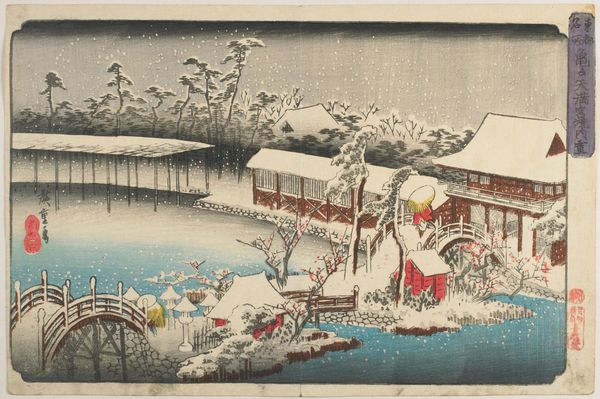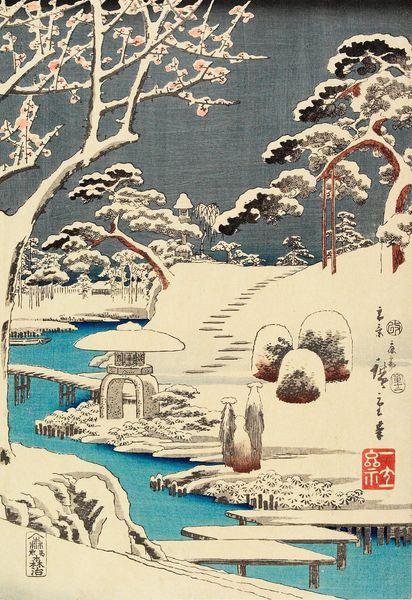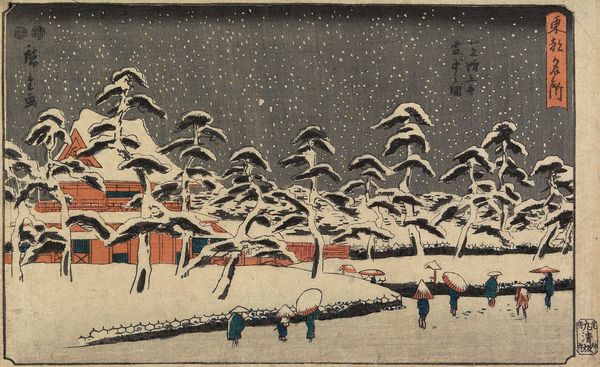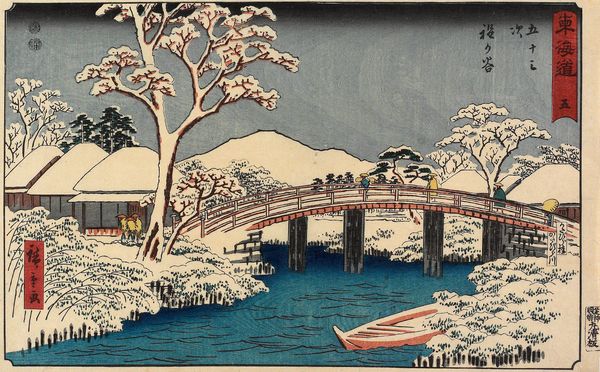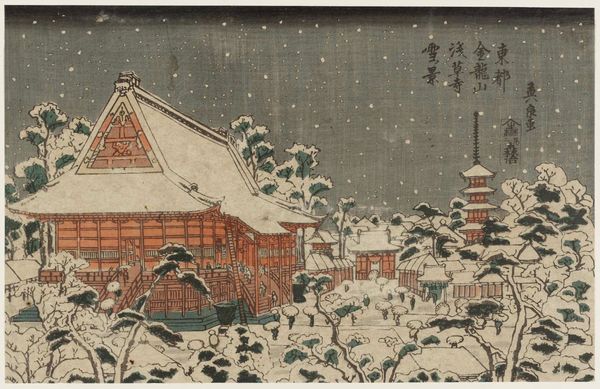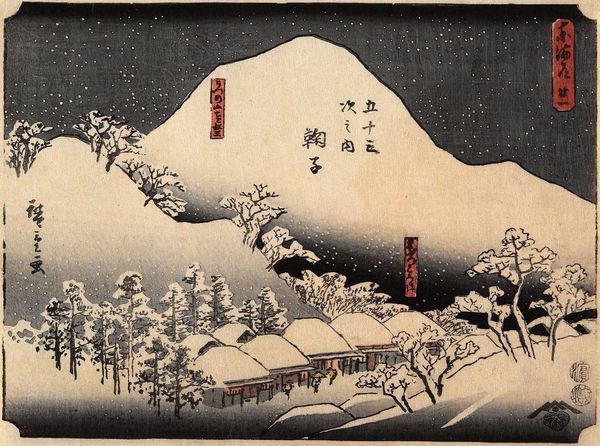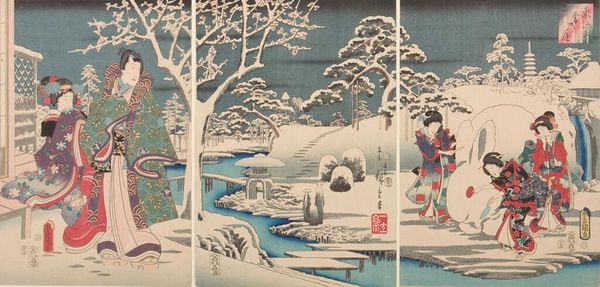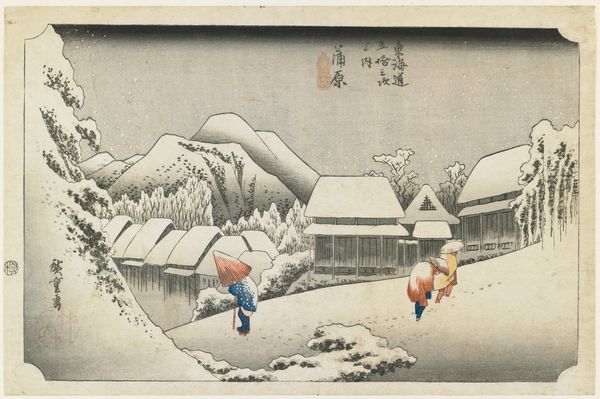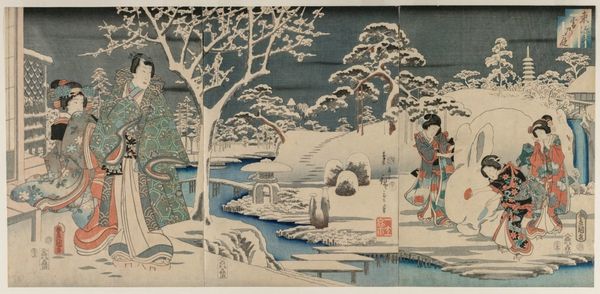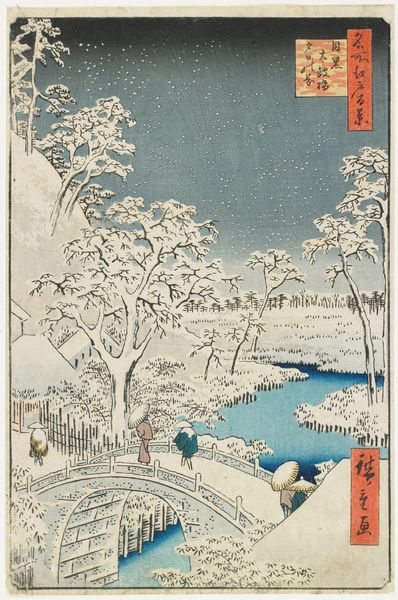
Snow in the Precincts of the Tenman Shrine at Kameido c. 1832 - 1838
0:00
0:00
print, ink, woodblock-print
# print
#
landscape
#
ukiyo-e
#
ink
#
woodblock-print
Dimensions: 8 11/16 × 13 7/16 in. (22 × 34.2 cm) (image, sheet, horizontal ōban)
Copyright: Public Domain
Curator: Brrr, what a scene of quietude. I’m struck by how masterfully Hiroshige captured the hushed atmosphere of a snow-laden landscape. Editor: Indeed. The woodblock print, created sometime between 1832 and 1838, is known as "Snow in the Precincts of the Tenman Shrine at Kameido.” We're looking at a classic example of ukiyo-e, now held at the Minneapolis Institute of Art. What do you see reflected about society here? Curator: I see continuity and resilience. Snow, often associated with endings, here blankets a place of worship, suggesting an enduring spiritual core amidst the transience of seasons, reminding me of the cyclical view of time and existence found in Shinto beliefs. Editor: Yes, Tenman shrines are dedicated to Sugawara no Michizane, a Heian period scholar deified as Tenjin, the god of scholarship. That bridging of earthly knowledge and divine wisdom is potent in the image. The very act of pilgrimage to a place like this highlights its socio-cultural significance, doesn't it? Curator: Precisely. Even the act of walking through such a landscape, braving the snow to reach the shrine, speaks to a commitment and reverence embedded in the culture. Look at that figure traversing the bridge—the symbol of a journey. Editor: I notice the prominent placement of architectural structures, their design solid and assertive in contrast to the delicate, snow-laden branches of the trees. It almost feels as if Hiroshige intended the man-made elements to stand as emblems of community strength and established order. Curator: The red accents of smaller shrine buildings are wonderful counterpoints, anchoring the eye and adding warmth amidst all the blue and white, like embers of cultural memory glowing warmly within the community’s collective identity. They symbolize something fervent. Editor: Absolutely. Thinking about how ukiyo-e prints became increasingly popular amongst the merchant classes during this era, works like these gave them a sense of connection to celebrated landscapes and sites of cultural importance previously only accessible to the aristocracy. It democratized visual culture. Curator: So we have this interesting layering: sacred spaces, a population devoted to nature, and a visual representation becoming increasingly accessible. Ultimately, the picture preserves more than a landscape; it preserves values. Editor: Precisely! This artwork is a potent reminder that places and images help in cultural negotiations and that our readings always reflects socio-cultural values.
Comments
No comments
Be the first to comment and join the conversation on the ultimate creative platform.
